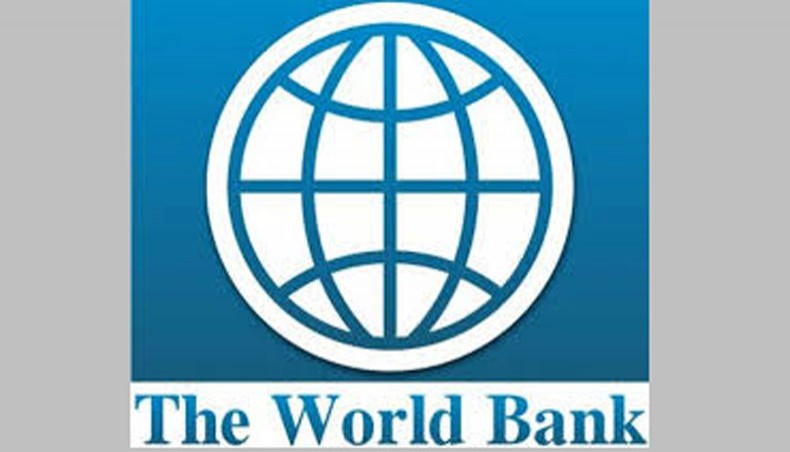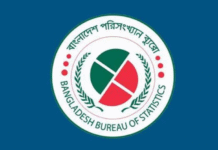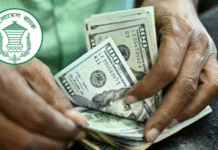Extreme poverty rate in the country dropped to 12.9 per cent of the total population in financial year 2015-16 from 18.5 per cent in 2010, the World Bank said in its latest report on Monday.
The report titled ‘Poverty and Shared Prosperity: Taking on Inequality,’ however, said that Bangladesh was still the 64th poorest country of the 154 countries across the world, despite the country’s impressive job in reducing poverty over the last decades.
The report also placed Bangladesh in the top 10 countries, including India, Nigeria, Congo, China, Indonesia, Tanzania, Ethiopia, Madagascar and Mozambique, where the highest
number of the poor lived.
Under the new international poverty threshold of $1.90 per day, 18.5 per cent or 2.8 crore Bangladeshis lived in extreme poverty in 2010, said the bank.
The extreme poverty rate drooped mainly because of impressive economic growth over the years and appreciation of Taka under the 2011 purchase power parity exchange rate to Tk 24.8 against per US dollar from Tk 52.4 in the 2005 rate, the multilateral lending agency said.
The bank revealed the data while releasing the report along with the Bangladesh Development Update–October 2016 at a briefing at its Dhaka office.
The bank in 2015 made the upward adjustment of the poverty line from $1.25 per capita per day to $1.90 and adopted 2011 purchase power parity exchange rate replacing the 2005 rate to adjust the inflation since 2005.
Under the $1.25 income per capita per day based on 2005 purchase power parity exchange rate, 43.3 per cent or 6.56 crore of the total population lived in extreme poverty in 2010.
According to the government data, 17.6 per cent Bangladeshis were below the national lower poverty line calculated by the Bangladesh Bureau of Statistics based on cost of basic needs.
According to the World Bank report, more than 1.6 crore people graduated from extreme poverty between 2000 and 2010.
The poorest 40 per cent of the population saw positive per capita income or consumption growth during 2005-2010 and grew by 0.43 percentage points higher than the national per capita income or consumption growth, the report said.
In this case which is called shared prosperity premium, Bangladesh outperformed a number of South Asian countries including India, Bhutan and Pakistan, it said.
‘The country has the potential to end extreme poverty by 2030 as per the target of the global Sustainable Development Goals if it takes firm steps to make growth more inclusive and faster gross domestic products growth over 8 per cent to benefit the poorest 40 per cent of population,’ the report said.
The World Bank country director for Bangladesh, Qimiao Fan, said at the briefing that the country needed to sustain its economic growth, reform financial and energy sectors, increase investment in infrastructure and human resource development for overcoming extreme poverty.
The bank’s lead economist for Dhaka Zahid Hussain said that it would not be possible to achieve the ending of poverty by 2030 if the government could not ensure faster and inclusive growth.
Poverty rate may also decline further to 12.1 per cent in FY 17 and to 11.4 per cent in FY 18 if the economy grows by 6.8 per cent and 6.2 per cent respectively projected by the bank for the years, he said.
The report titled ‘Poverty and Shared Prosperity: Taking on Inequality,’ however, said that Bangladesh was still the 64th poorest country of the 154 countries across the world, despite the country’s impressive job in reducing poverty over the last decades.
The report also placed Bangladesh in the top 10 countries, including India, Nigeria, Congo, China, Indonesia, Tanzania, Ethiopia, Madagascar and Mozambique, where the highest
number of the poor lived.
Under the new international poverty threshold of $1.90 per day, 18.5 per cent or 2.8 crore Bangladeshis lived in extreme poverty in 2010, said the bank.
The extreme poverty rate drooped mainly because of impressive economic growth over the years and appreciation of Taka under the 2011 purchase power parity exchange rate to Tk 24.8 against per US dollar from Tk 52.4 in the 2005 rate, the multilateral lending agency said.
The bank revealed the data while releasing the report along with the Bangladesh Development Update–October 2016 at a briefing at its Dhaka office.
The bank in 2015 made the upward adjustment of the poverty line from $1.25 per capita per day to $1.90 and adopted 2011 purchase power parity exchange rate replacing the 2005 rate to adjust the inflation since 2005.
Under the $1.25 income per capita per day based on 2005 purchase power parity exchange rate, 43.3 per cent or 6.56 crore of the total population lived in extreme poverty in 2010.
According to the government data, 17.6 per cent Bangladeshis were below the national lower poverty line calculated by the Bangladesh Bureau of Statistics based on cost of basic needs.
According to the World Bank report, more than 1.6 crore people graduated from extreme poverty between 2000 and 2010.
The poorest 40 per cent of the population saw positive per capita income or consumption growth during 2005-2010 and grew by 0.43 percentage points higher than the national per capita income or consumption growth, the report said.
In this case which is called shared prosperity premium, Bangladesh outperformed a number of South Asian countries including India, Bhutan and Pakistan, it said.
‘The country has the potential to end extreme poverty by 2030 as per the target of the global Sustainable Development Goals if it takes firm steps to make growth more inclusive and faster gross domestic products growth over 8 per cent to benefit the poorest 40 per cent of population,’ the report said.
The World Bank country director for Bangladesh, Qimiao Fan, said at the briefing that the country needed to sustain its economic growth, reform financial and energy sectors, increase investment in infrastructure and human resource development for overcoming extreme poverty.
The bank’s lead economist for Dhaka Zahid Hussain said that it would not be possible to achieve the ending of poverty by 2030 if the government could not ensure faster and inclusive growth.
Poverty rate may also decline further to 12.1 per cent in FY 17 and to 11.4 per cent in FY 18 if the economy grows by 6.8 per cent and 6.2 per cent respectively projected by the bank for the years, he said.
Source: new age










